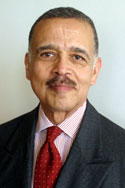ARCHIVES
OF EDITORIALS
November 25, 2004
A winning strategy
Social planners are searching for the philosopher’s
stone that will change under-achieving urban youth into highly
motivated, productive members of society. At a recent luncheon
meeting sponsored by “Year Up,” a highly successful
youth training program, those present tried to discover the secret.
In many ways Year Up has already discovered part of the answer.
This program, which was founded in 2000, has already moved more
than 200 urban young adults, ages 18-24, into decent paying jobs.
Year Up’s formula is very simple.
Those in the age range who have high school diplomas or GED certificates
are recruited for a year-long program. For the first six months
they receive technical and professional training. Then they are
placed in six-month paid apprenticeships with major corporate
partners. Those who succeed are then offered permanent employment
at salaries which average $14 per hour.
An added incentive is that those students who complete the program
are enrolled in Cambridge College where their training courses
count for college credit. Also, enrollees receive a stipend while
attending the first six months of training. Their stipend is docked
for unexcused absence or tardiness.
Year Up has an extraordinary success rate. Student retention is
86 percent, 90 percent of students successfully complete internships,
85 percent get jobs and 65 percent enroll in college. In addition,
Year Up is cost effective. It costs $11,000 per student per year
and interns are paid by employers at the rate of $14,000 per year.
Gerald Chertavian, the founder and executive director of Year
Up, sees great potential for expanding the program. In fact, the
program can grow as fast as there are corporate partners with
employment possibilities and urban youth with the discipline and
desire to move ahead.
With a dropout rate of only 14 percent, Chertavian has clearly
developed a success strategy far superior to other similar programs.
However, much rests on the effectiveness of Year Up’s screening
system. Chertavian seems to be concerned about the elusive philosopher’s
stone that will so transform the lives of urban youth that many
more will easily pass the Year Up screening.
As anticipated by many, the secret of the philosopher’s
stone remains elusive. Participants in the luncheon offered many
suggestions about appearance, punctuality, proper speech and courteousness
as necessary to success in the business world. Missing was how
young adults from urban low-income families might be motivated
to reach out on their own to move up the professional ladder.
While the Banner does not purport to have the answer, it might
be appropriate to point out a strategy of the black leadership
which might have the unintended consequence of depressing the
achievement of black youth.
During the civil rights movement, it was necessary to point out
repeatedly the abuses of white society. Unfortunately, this created
an illusion of powerlessness in the black community. There were
some who believed it was all right to give up because whites were
always going to prevent blacks from succeeding.
What is needed now is a call for African Americans to stop worrying
about whites and to step up and excel as a matter of ethnic pride
and responsibility. Black youth must understand that progress
requires discipline and commitment. Success is possible if you
make the effort.
Home
Page

